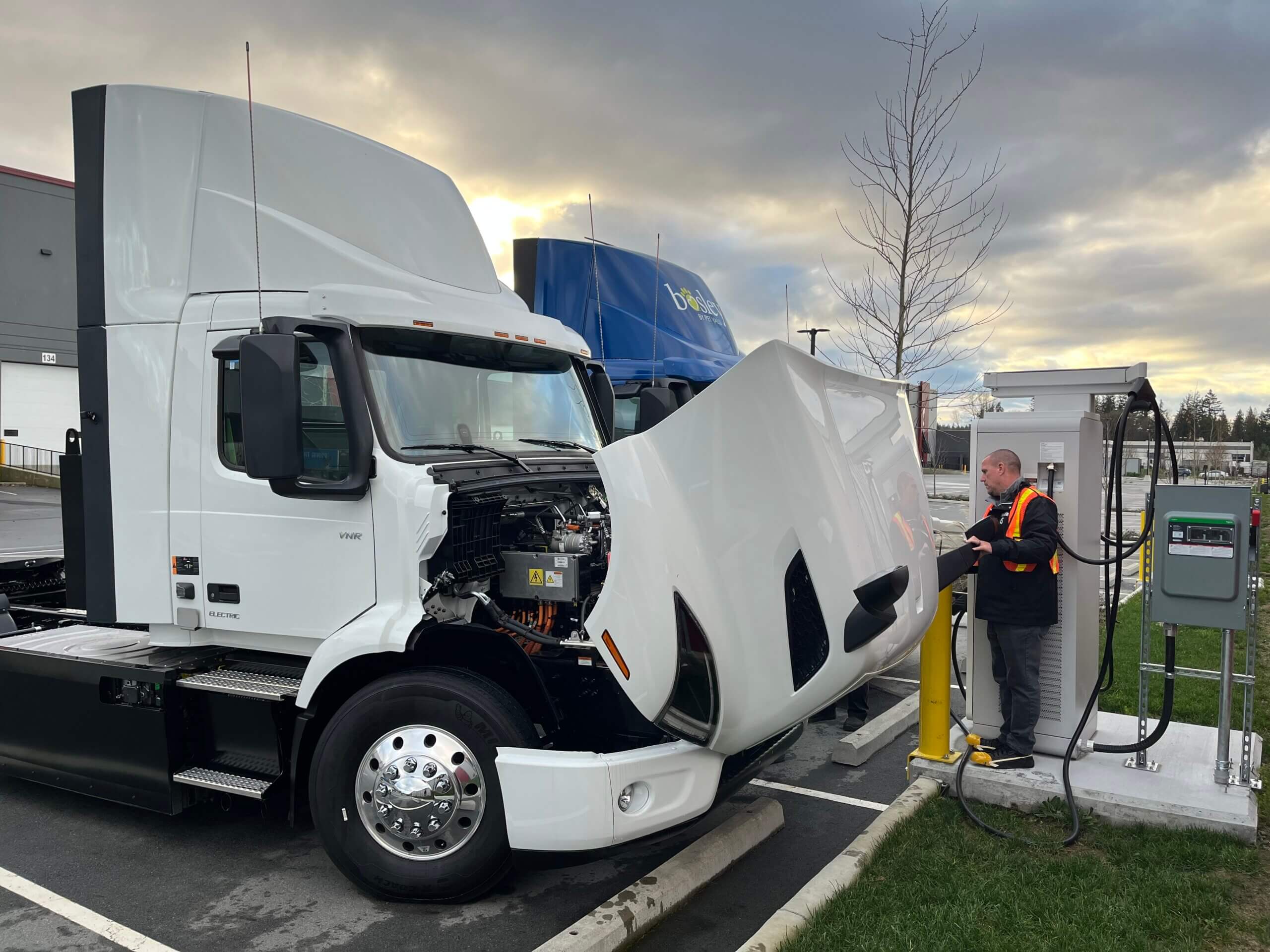Fleet managers today face growing pressure to deliver exceptional service while managing costs and maximizing efficiency, making every route count.
Fleet electrification is a compelling solution, and it’s gaining momentum worldwide. Although electric vehicles (EVs) currently make up just 1.5% of the global fleet, their fast growth signals a shift.
Switching to EVs involves upfront costs, but the total cost of ownership (TCO) more than makes up for it. Lower fuel expenses, reduced maintenance, and available incentives make EVs a smart financial choice for many fleets.
To fully realize the return on investment (ROI) from your electric fleet, we have outlined seven practical strategies to maximize savings and minimize risks when building out your EV fleet.
1. Optimize your EV selection
Choosing the right EVs for your fleet is the starting point for long term savings. You should consider:
- Range needs: Ensure vehicles meet daily mileage requirements with a buffer for unexpected trips.
- Duty cycles: How is the vehicle used during the day? Long duration of driving or a route with a lot of start and stops? where does it park overnight?
- Vehicle type: Match EV models to operational roles, such as last-mile delivery vans or service trucks.
- Total cost of ownership: Factor in purchase price, maintenance, and potential resale value to assess long-term savings.
2. Build a smart charging strategy
An effective charging strategy keeps your fleet operational and cost-efficient. Depending on your needs, you can opt for private, public, or home charging— or a combination of all three.
- Private Charging: Offers control and cost savings, allowing you to schedule charging during off-peak hours and track energy use. However, it requires an upfront investment in infrastructure, space, and ongoing maintenance.
- Public Charging: Ideal for flexibility on the road, public charging works well for smaller fleets or temporary needs. While it avoids installation costs, it comes with higher electricity rates, wait times, and limited control over charging times. Few public chargers have the space or pull-through room for cargo vans and trucks, so public options for vehicles of this size are more limited.
- Home Charging: Convenient for remote drivers, home charging eliminates the need for depot visits. Companies often reimburse employees for electricity and equipment, but tracking costs and data can be challenging.
Many fleets combine these approaches to balance cost, flexibility, and efficiency. Weighing additional considerations such as vehicle type, job to be done, and whether it can handle AC or DC charging are also critical. Whatever type of charging solution you go for, when your EV is optimized for its daily range, public charging will only be required occasionally or for those ‘emergency’ situations.
For large deployments, talk to experts to navigate permitting challenges and local utility coordination.
3. Take advantage of electric vehicle incentives
Many governments and organizations provide financial support to ease the costs of fleet electrification. Examples include:
- Rebates: Incentives for EVs, which result in discounts at the point or purchase, or post-purchase rebates.
- Tax credits: In some jurisdictions, rather than direct government incentive funding, the purchase of electric vehicles or charging infrastructure is eligible for a tax credit.
- Grants: Bespoke program funding for electrification projects. Requirements and eligibility vary.
Staying informed about programs in your area can dramatically reduce initial expenses. Learn more about financing your fleet’s transition in Canada.
4. Monitor and minimize maintenance costs
One of the biggest financial benefits of EV fleet management is reduced maintenance. With far fewer moving parts compared to internal combustion engine (ICE) vehicles, EVs eliminate many common repairs.
| Maintenance Category | EV | ICE |
| Oil Changes | Not required ✅ | Required |
| Spark Plugs Replacement | Not required ✅ | Required |
| Brake Wear and Tear | Minimal due to regenerative braking ✅ | Higher wear, frequent replacements ❌ |
| Tires | Required | Required |
| Transmission Repairs | Simpler or absent systems ✅ | Complex and costly repairs ❌ |
| Battery Maintenance | Minimal, with long-term degradation checks (~$0.02/km) | Not applicable ❌ |
| Engine Repairs | Rare ✅ | Routine repairs required (~$0.05/km) |
| Overall Maintenance Costs | ~$0.03/km | ~$0.06/km |
To keep maintenance costs low, use telematics to monitor vehicle health and schedule proactive maintenance. This extends the lifespan of your EVs and minimizes downtime.
For more detailed cost lists see resources from the US Department of Energy & the Electric Autonomy Canada – EV Fleets Knowledge Portal.
5. Focus on driver training
How drivers operate your EVs can greatly impact both their performance and lifespan. Teaching drivers to accelerate smoothly, maintain steady speeds, and use regenerative braking helps save energy and increase range. Some fleets even see more engaged drivers as they compete with peers to return to base with more range left, when driving equivalent routes/loads – based on their use of regenerative braking. Drivers should also learn charging best practices to avoid delays and ensure vehicles are ready for use after a charging session.
Regular training and clear communication make it easier for your team to adapt to EVs and get the best results for your fleet.
6. Use fleet management software
Modern fleet management tools for EVs are critical for optimizing operations and improving ROI. These tools can integrate telematics to monitor and analyze key aspects of your fleet vehicle performance and operation including:
- Battery state of charge: Real-time communication of battery capacity.
- Battery health monitoring: Detect issues early to minimize downtime.
- Energy consumption analysis: Identify inefficiencies to reduce costs.
- Predictive maintenance: Avoid unexpected breakdowns with early servicing alerts.
- Route optimization: Save time and energy with traffic and route analytics.
- Range predictions: Use GPS-based data to improve trip planning.
7. Plan for long-term scalability
Electrification isn’t a one-time switch—it’s an ongoing process. As your fleet grows, your charging needs and operational requirements will evolve. Planning for scalability from the beginning ensures you’re ready to adapt without major disruptions.
Start small with a pilot program to test your setup, gather data and operational experience, to refine your strategy. Use those insights to scale up confidently, avoiding costly mistakes along the way.
Ready to electrify your fleet?
Fleet electrification offers a substantial ROI, but success depends on careful planning. By selecting the right vehicles, building a thoughtful charging strategy, and leveraging modern fleet tools, you can maximize savings, reduce emissions, and deliver exceptional service.
Contact 7Gen for a complete commercial EV fleet solution. Vehicles, charging and support, streamlined in one monthly payment.

